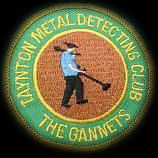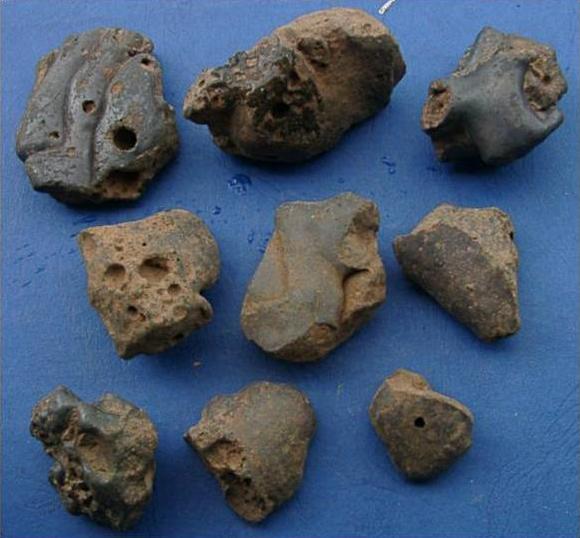
Taynton History
Parish History
The Dobunni
Roman Iron Making
Roman mosaic
Taynton Parva
St Lawrence Church
Glass Making
Brick Yard & Pottery
Brass Mill
WWII
Typhoon Crash
Hampden Crash
US Camp
US Finds
Taynton Metal Detecting Club
The Gannets
Roman Iron Smelting
The use of iron in Britain is believed to have started between 700 BC and 500 BC and as it became more plentiful the use of copper and bronze for making tools and weapons began to decline. A very extensive iron making industry began to develop in this area due to the large deposits of iron ore that could be found locally and in the Forest of Dean and also due to an abundance of timber for making the charcoal with which to fire the furnaces. In 1990 evidence of a major Roman iron working and pottery making site was discovered just south of Newent and later further sites were discovered at Taynton and Tibberton. Iron slag (bloomery slag) was found scattered over a wide area also pottery shards, lead and bronze artefacts and Roman coins were also discovered. At Taynton a scattered hoard of 190 early 4th century coins were unearthed mostly of the Emperor Constantine the Great.
According to archaeologists the iron was made in a simple furnace known as a shaft furnace. A cylinder of clay was built about a metre high with an arch at the bottom to allow slag to run off. Charcoal and iron ore were put into the furnace in layers. Some form of bellows would have been needed to raise a temperature of 1,300 degrees C. in order to form a bloom (a mixture of molten iron and waste materials). This crude iron mixture would then be taken out of the furnace, and heated and hammered until all the rubbish had been driven off, producing wrought iron. This was then used for making tools and weapons and the waste left behind is what we now call bloomery slag or cinders.

Blommery slag.
Due to the inefficient extraction methods used by the Romans, bloomery slag still contained a high percentage of iron and thousands of tons were left piled up at the smelting sites. In the 17th and 18th centuries it was collected and re-smelted at the new and more efficient furnaces that came into being. Most of the local slag would have gone to the Elmbridge Furnace in Furnace Lane, Newent owned by the Foley family. Their old accounts record the quantities and costs of hauling cinders (slag) from Newent, Taynton and Tibberton. Mention is made that Roman coins of Nerva, Vespation, Constantine and fine pieces of pottery were found amongst the cinders at that time